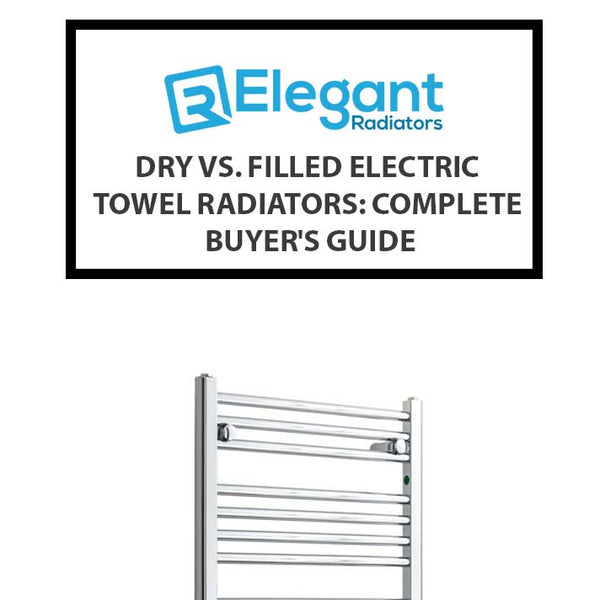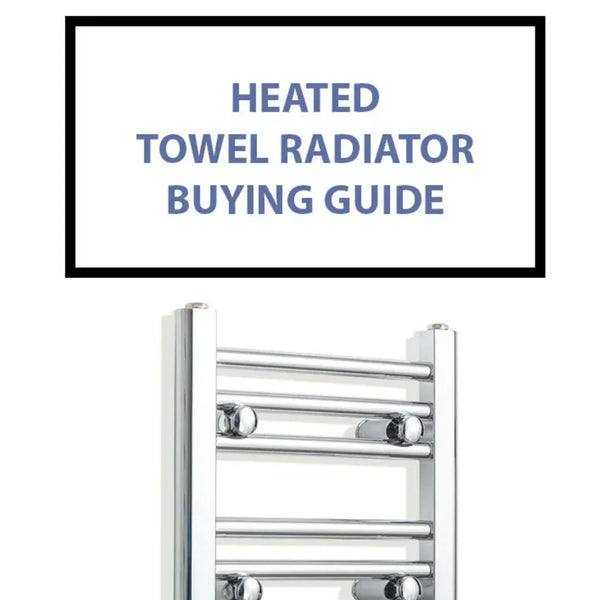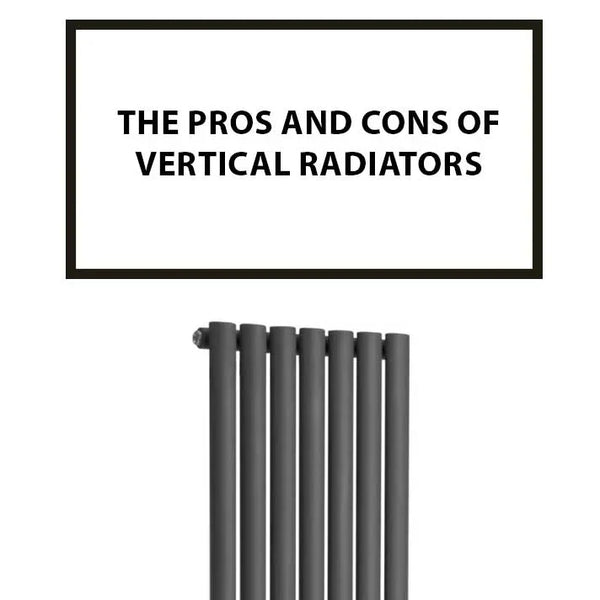Panel Radiators vs Designer Radiators: Which is Best for UK Homes?
Choosing the right radiators for your UK home is a crucial decision that affects both your comfort and energy bills. With British households spending an average of £1,500 annually on heating, selecting the most suitable radiator type can make a significant difference to your home's efficiency and aesthetics. This comprehensive guide explores the key differences between panel radiators and designer radiators to help you make an informed choice.

Understanding Panel Radiators
Panel radiators have been the backbone of British home heating for decades. These traditional heating solutions consist of one or more flat panels with convector fins positioned behind them, designed to maximise heat distribution throughout your rooms.
Types of Panel Radiators
Panel radiators come in various configurations, typically denoted by a three-digit code. Single panel radiators (Type 11) feature one panel and one set of convector fins, making them ideal for smaller rooms or areas requiring less heat output. Double panel radiators (Type 21 or Type 22) offer enhanced heating capacity, perfect for larger living spaces or rooms with poor insulation. The most powerful option, Type 33 radiators, incorporate three panels and three sets of convector fins, delivering maximum heat output for particularly cold rooms or properties with high ceilings.
Advantages of Panel Radiators
Cost-Effectiveness: Panel radiators represent exceptional value for money, with basic models starting from as little as £50 for smaller sizes. This affordability makes them ideal for landlords, first-time buyers, or homeowners managing renovation budgets. When heating an entire property, the cost savings compared to designer alternatives can be substantial, potentially saving thousands of pounds.
Superior Heat Output: The convector fin design ensures efficient heat distribution, with Type 22 and Type 33 models delivering impressive BTU outputs. A standard 600mm x 1200mm Type 22 panel radiator can produce approximately 4,500 BTUs, sufficient for heating a medium-sized bedroom or study effectively.
Quick Installation: Standard sizing means panel radiators fit existing pipework configurations easily. Most competent DIY enthusiasts can replace like-for-like panel radiators, though professional installation is recommended for optimal performance and safety.
Wide Availability: Every heating merchant and DIY store across the UK stocks panel radiators in standard sizes. This availability ensures quick replacement if needed and competitive pricing due to market competition.
Proven Reliability: Decades of use in British homes have proven panel radiators' durability. Quality models from reputable manufacturers can last 15-20 years with minimal maintenance, providing consistent heating performance throughout their lifespan.
Disadvantages of Panel Radiators
Despite their practical benefits, panel radiators have limitations. Their utilitarian appearance may clash with contemporary interior design schemes, and they protrude significantly from walls, consuming valuable floor space in smaller rooms. The standard white finish, whilst clean and neutral, offers little scope for personalisation or creative expression.
Exploring Designer Radiators
Designer radiators have revolutionised home heating aesthetics in the UK market. These statement pieces combine functionality with artistic design, transforming heating solutions into decorative focal points that enhance interior spaces.
Types of Designer Radiators
The designer radiator market offers remarkable variety. Vertical radiators maximise wall space whilst minimising floor area, ideal for narrow hallways or compact bathrooms. Horizontal designer models provide traditional placement with enhanced aesthetics, featuring unique finishes and sculptural designs. Column radiators echo Victorian-era heating with modern efficiency, whilst contemporary designs include ladder-style towel radiators, mirror radiators, and even artistic pieces that double as wall art.
Advantages of Designer Radiators
Aesthetic Excellence: Designer radiators serve as interior design features, available in finishes including brushed steel, anthracite, copper, gold, and custom colours to match any décor scheme. Many homeowners specifically design room layouts around striking designer radiators, using them as architectural focal points.
Space Optimisation: Vertical designer radiators can reach ceiling height whilst occupying minimal wall width, perfect for Victorian terraces or modern apartments where space is premium. A 1800mm tall vertical radiator might occupy just 300mm of wall width yet deliver equivalent heat output to a much larger panel radiator.
Property Value Enhancement: Premium radiators contribute to overall property presentation, potentially increasing home value and appeal to prospective buyers. Estate agents often highlight designer bathrooms and contemporary heating solutions as selling points for modern properties.
Versatility: From industrial lofts to country cottages, designer radiators suit every property style. Specialist manufacturers offer bespoke sizing and finishes, ensuring perfect integration with your interior vision.
Innovation: Many designer radiators incorporate modern technology, including smart thermostatic controls, dual fuel capability (allowing both central heating and electric operation), and improved energy efficiency through advanced materials and design.
Disadvantages of Designer Radiators
The primary drawback is cost, with designer radiators typically costing three to ten times more than equivalent panel radiators. A premium designer radiator for a living room might cost £500-£1,500 compared to £100-£200 for a panel alternative. Some designer models prioritise aesthetics over performance, potentially delivering lower heat output than their panel counterparts. Bespoke sizing can also complicate future replacements, and certain finishes may require more maintenance to preserve their appearance.
Energy Efficiency Comparison
Both radiator types can operate efficiently when correctly sized and installed. Panel radiators, particularly Type 22 models, generally offer excellent heat output per pound spent, making them economically efficient. Their rapid heat-up time also contributes to energy savings when using modern heating controls.
Designer radiators' efficiency varies by design. Vertical models may heat rooms less evenly than horizontal alternatives, whilst some sculptural designs sacrifice efficiency for aesthetics. However, premium designer radiators often incorporate modern materials like aluminium, which heats quickly and responds rapidly to thermostat adjustments, potentially reducing energy waste.
The key to efficiency lies in proper sizing. Calculate your room's BTU requirements based on dimensions, insulation quality, and window sizes. An undersized radiator, regardless of type, will struggle to heat adequately, whilst an oversized unit wastes energy and money.
Installation and Maintenance Considerations
Panel radiator installation is straightforward, with standard brackets and fittings available at any plumbers' merchant. Most heating engineers can install a panel radiator in under an hour, with labour costs typically £100-£150 per radiator.
Designer radiators may require specialist brackets, bespoke pipework, or additional support for heavy models. Installation complexity increases costs, with labour charges potentially reaching £200-£300 per radiator. Some designs also require specific wall types or reinforcement, particularly important in older properties with lath and plaster walls.
Maintenance requirements differ too. Panel radiators need occasional bleeding to remove air locks and yearly system flushes to prevent sludge build-up. Designer radiators require similar maintenance plus careful cleaning to preserve special finishes harsh chemicals may damage powder coating or metallic finishes.
Room-Specific Recommendations
Living Rooms: Designer radiators excel here, serving as focal points whilst providing substantial heat output. Consider horizontal designer models or elegant column radiators that complement your décor.
Bedrooms: Panel radiators offer practical solutions, delivering reliable warmth without consuming budget. However, a designer radiator in the master bedroom adds a touch of luxury.
Bathrooms: Heated towel rails combine functionality with design. Chrome or white ladder-style radiators suit most bathrooms, whilst anthracite finishes complement contemporary schemes.
Kitchens: Compact panel radiators or space-saving vertical designers work well in kitchens where wall space is limited by cabinetry.
Hallways: Vertical designer radiators maximise heating in narrow corridors without impeding traffic flow, whilst smaller panel radiators suit modest entrance halls.
Cost Analysis
For a typical three-bedroom UK semi-detached house requiring eight radiators, panel radiators might cost £800-£1,200 for quality units plus £800-£1,200 installation, totalling approximately £1,600-£2,400.
Designer radiators for the same property could cost £3,000-£8,000 for the units plus £1,500-£2,400 installation, totalling £4,500-£10,400. However, many homeowners opt for a hybrid approach, designer radiators in prominent rooms and panel radiators in utility areas balancing aesthetics with budget.
Making Your Decision
Consider your priorities carefully. If budget is paramount and you need reliable, efficient heating across multiple rooms, panel radiators represent the sensible choice. They'll perform excellently for years with minimal fuss.
If you're renovating a property, planning to stay long-term, or prioritising interior design, designer radiators justify their premium cost through aesthetic contribution and potential property value enhancement. The daily visual pleasure and design coherence they provide may well outweigh the additional expense.
Many UK homeowners find the optimal solution combines both types investing in striking designer radiators for living areas and master bedrooms whilst choosing cost-effective panel radiators for less prominent spaces. This approach maximises both budget efficiency and aesthetic impact.
Conclusion
Both panel radiators and designer radiators serve UK homes effectively, but they cater to different priorities. Panel radiators offer unbeatable value, reliability, and heating performance perfect for practical homeowners and rental properties. Designer radiators provide aesthetic excellence and can transform heating from necessity to design feature ideal for those viewing their home as a long-term investment in comfort and style.
Ultimately, the best choice depends on your specific circumstances, budget, and design aspirations. Consult with a Gas Safe registered heating engineer to ensure proper sizing and installation, whichever route you choose. They'll calculate accurate BTU requirements and recommend specific models suited to your property's unique characteristics, ensuring warm, comfortable living throughout the British winter.







